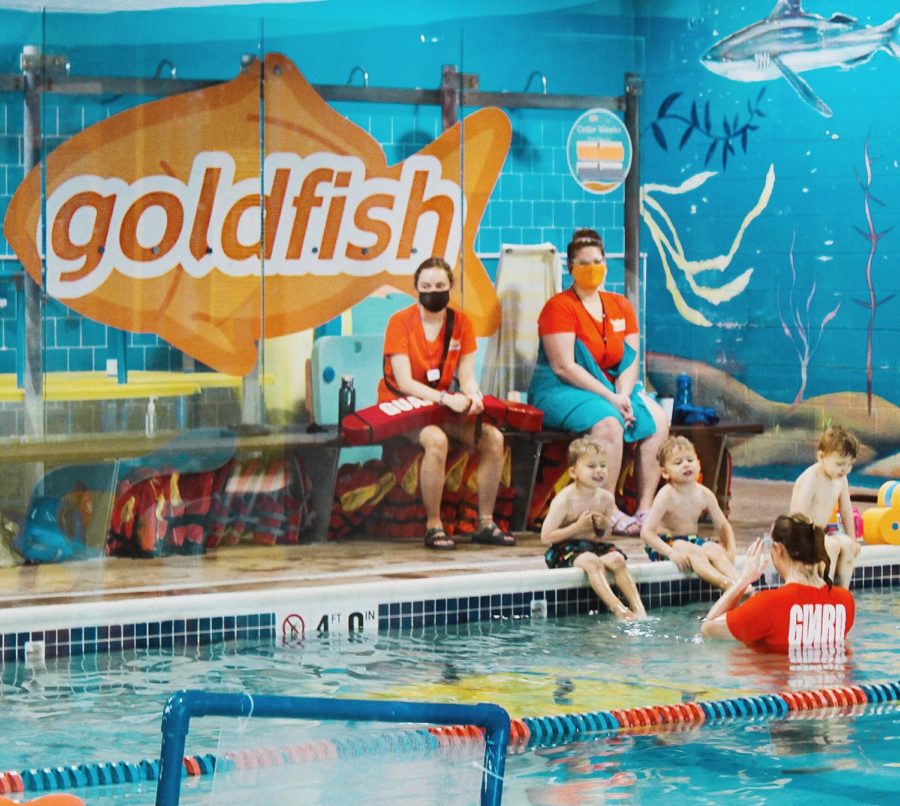Mundelein swim school adapts lessons for kids with autism
May 10, 2021
She felt her heart sinking as she froze in pure panic at the sight of her 5-year-old son, John, struggling to stay above water.
Since her son was diagnosed with autism spectrum disorder, Libertyville resident Sofia Seely has learned to be on high alert near bodies of water.
As lead swim instructor at Goldfish Swim School in Mundelein for half of John’s life, Seely was unaware of the increased danger John faces in a pool setting, as opposed to children who are not on the autism spectrum.
“It was a huge eye-opener,” Seely said as she remembers the drowning scare. “In his mind, ‘Mommy works in water, so it is OK if I jump in alone.’ He sees it as his second home.”
John jumped into the water without knowing how to swim that day because he lacked a sense of threat, Seely said. He, instead, naturally gravitated toward the water because of its calming sensory effects on children with ASD.
Studies show that children who have ASD are at a higher risk of drowning than the general pediatric population by approximately 160%. This is mainly attributed to their curiosity, causing them to be more prone to wander.
Dr. Guohua Li of Columbia University recognized swimming as an essential component in developing social, physical and cognitive skills in children with ASD in a recent article for WebMD.
Much like common therapies — speech, behavioral, occupational, etc. — Li suggests swimming should start at the early ages of 2 or 3 years. This way it becomes a skill children with ASD can build upon throughout the course of time, which will improve their overall quality of life.
Not only is it a benefit to their health, but it is a survival skill. A report by the National Autism Association found accidental drowning accounted for 91% of total deaths reported in children with autism, ages 14 and younger, subsequent to wandering in 2009, 2010 and 2011.
While employing the benefits of swimming, children with ASD require early safety training. Seely includes these protocols in both her swim classes at Goldfish Swim School and with her own children at home.
Seely finds that the main difference in teaching a child with ASD is that they are not as attentive to the instructions. Goldfish combats this by breaking down the swimming curriculum into steps, which makes it easier for students with ASD to retain the information.
In joint action, the lessons are given through picture-based modules, which enables students to visualize the skill before execution. This contributes to Goldfish’s science of play, ensuring that it is an overall enjoyable, yet productive, experience.
They start the curriculum by making the students feel comfortable in the water, which includes putting their face underwater and teaching them how to pull and kick. The most important, initial step Goldfish emphasizes is how to turn around and swim to the closest wall.
Similarly, they encourage students to do the sea otter float if they are in the water for longer periods of time, which is when they turn around on their backs and float to get fresh air.
Sara Fisher, who does marketing for Goldfish Swim School, explained why swim safety goes beyond swim classes and is important for all children, not just those with autism.
“The most important thing you can do to keep your kid safe is to enroll in swim lessons so that they can learn the fundamentals,” Fisher said.
“Another thing is to designate an adult to watch over the kids when they are swimming and know where egress and ingress to pools are so that you can create one entrance and exit to a pool for children. Especially as families plan summer vacations, these are very important things.”
Editor’s Note: This article, written by Courier Editor-in-Chief Sadie Romero, originally appeared in the Daily Herald on May 7, 2021.




















